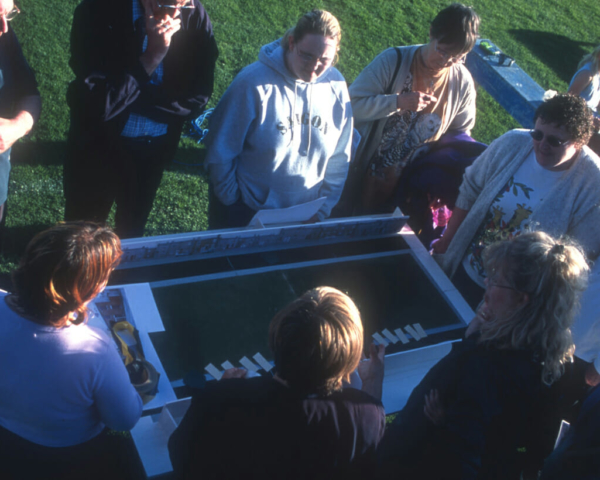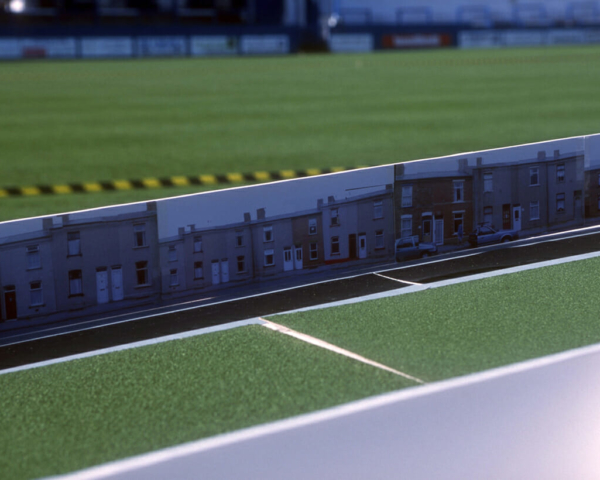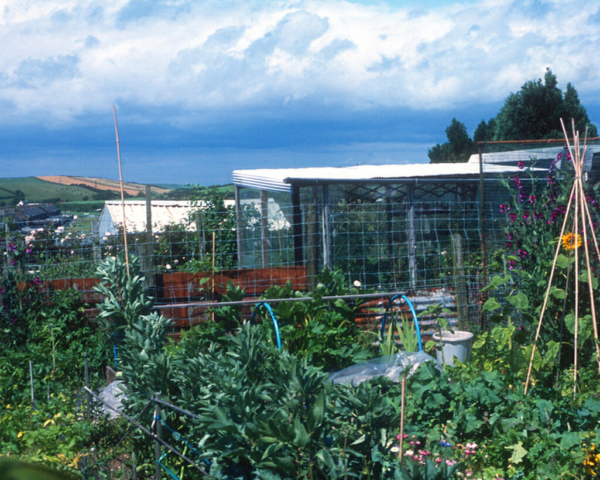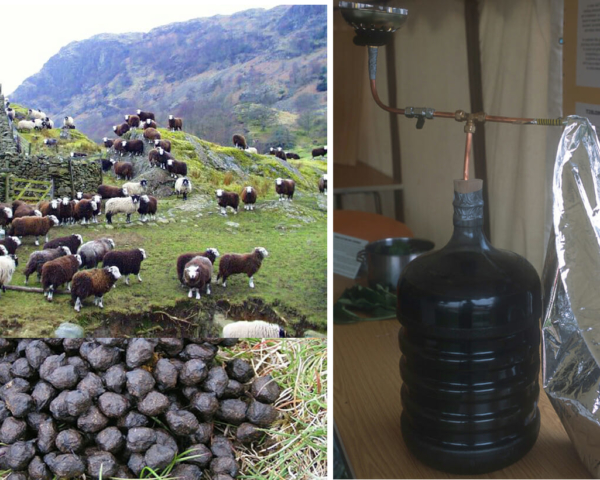Grizedale Artists In Residence
Temporary + Social Practice
Grizedale Arts & Barrow-in-Furness, England • 2002
Wowhaus worked with the community of Hindpool in Barrow-in-Furness, a community faced with economic challenges due to industrial decline. While exploring practical issues faced by a community in transition, this project investigated perennial themes such as hope and fear, nature and culture and individual and community. Peoples’ desire for “a bit of green” in their community was all the more striking given the town’s relative proximity to the bucolic Lakes District. Wowhaus actively involved community members in envisioning how to use an area that would be created when houses on two city blocks are demolished in the center of their community. Hands-on design sessions invited participation: a “full-scale” mock-up of the future space was delineated on a football field, and an architectural model featuring photos of house facades provided another visualization tool. People of all ages and backgrounds provided feedback and input; weekly Community Tea Times created opportunities for dialogue and exchange. Neighbors with special skills such as gardening offered to teach others to grow their own food and flowers; new funding sources were identified by Wowhaus as urban ecology and food security opportunities emerged.
IMAGE #6 &7
For the Ambleside Flower Show, we created an alternative agriculture exhibition that was inspired by the iconography of agricultural fairs – table top displays and exhibitions of skill or virtuosity: Scott developed a “sheep muck biogas generator” that was designed to make use of a locally prevalent agricultural byproduct, creating methane from sheep manure to fuel a traditional gas burner. Scott’s meanderings through the fells while collecting sheep muck was a contemporary homage to the poetic wanderings of Coleridge and Wordsworth, offering a pragmatic alternative to the Romantic view of this landscape.
IMAGE #8
For the Ambleside Flower Show, we created an alternative agriculture exhibition that was inspired by the iconography of agricultural fairs – table top displays and exhibitions of skill or virtuosity: In the “Nitrogen Challenge” exhibit, visitors learned about the exceptionally high nitrogen content of human hair as a compost amendment through interaction with a question-and-answer board; Aili cut Scott’s hair with a tiny pair of scissors, attracting many guests. Visitors were also asked about their own gardening traditions; many were interested to learn that the local “folk” tradition of steeping comfrey and stinging nettle in water is, indeed, a good source of nitrogen as well.








